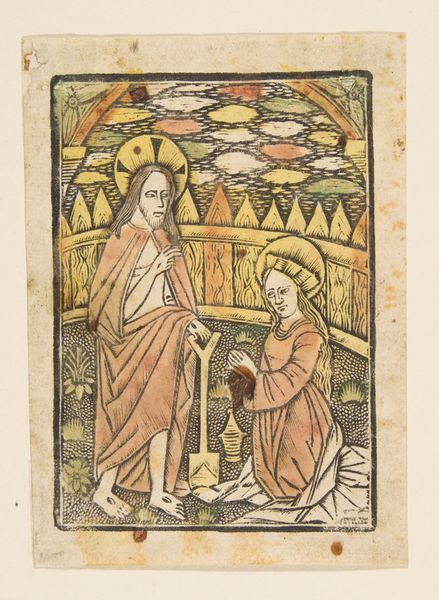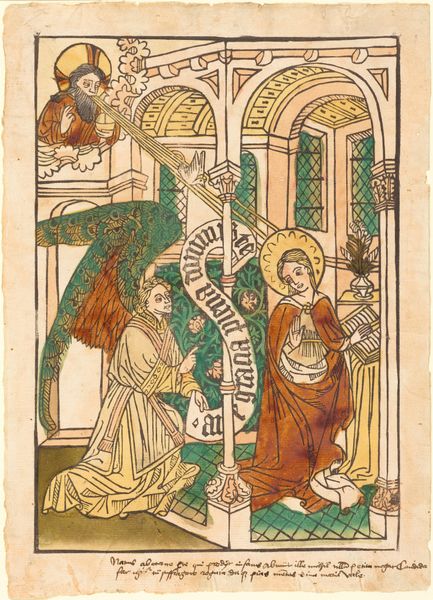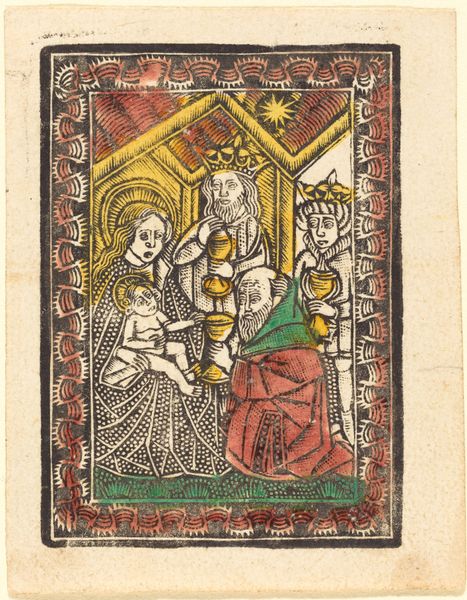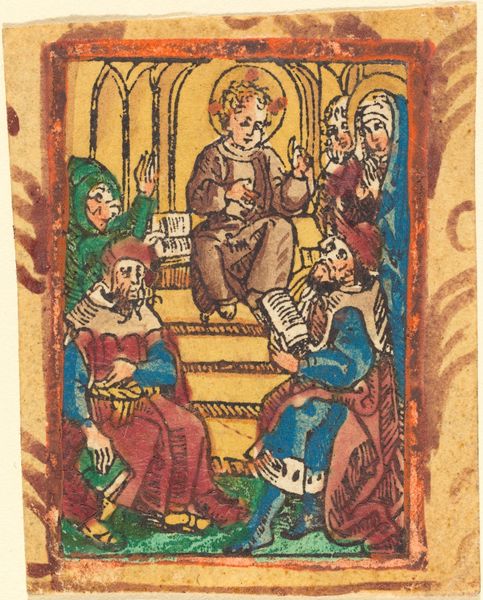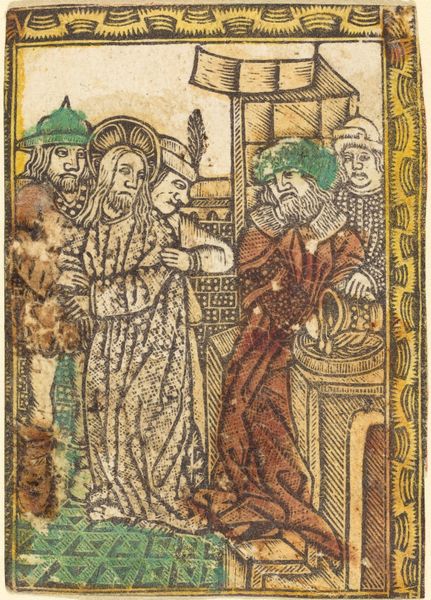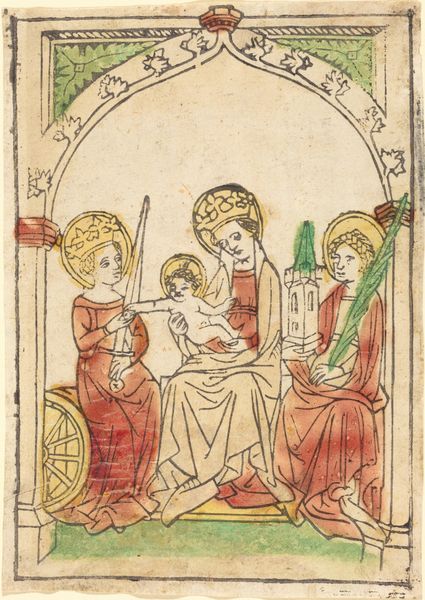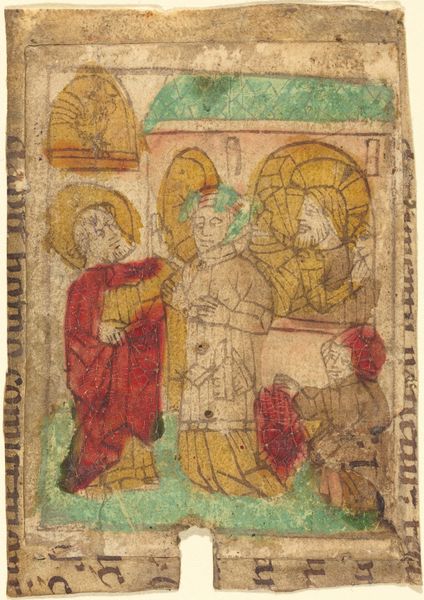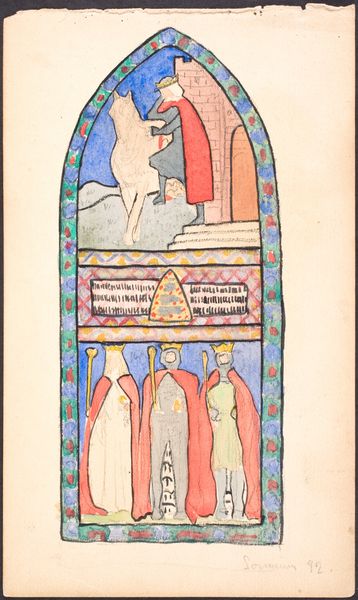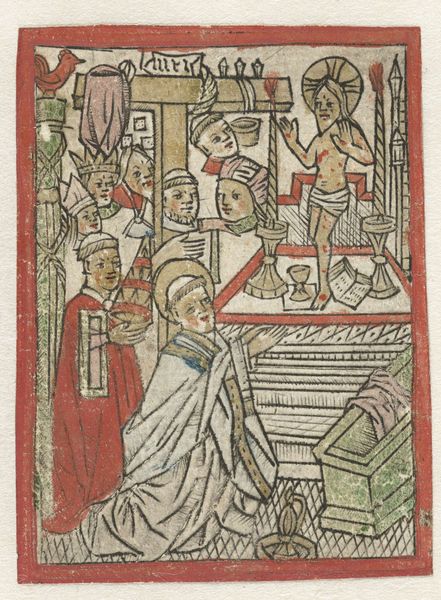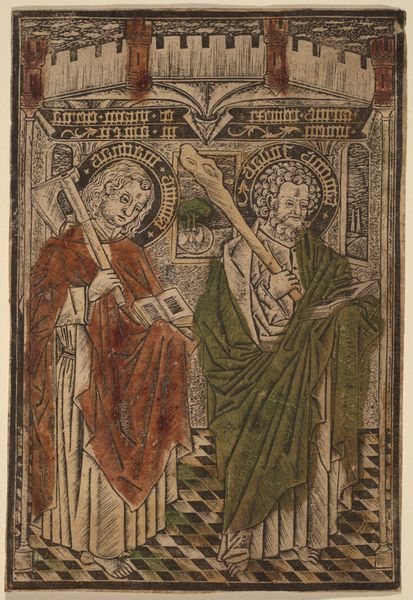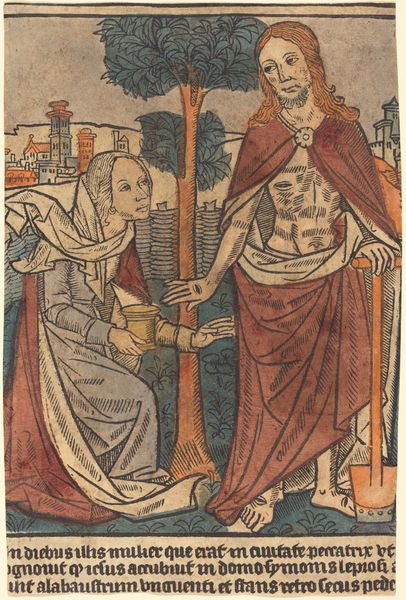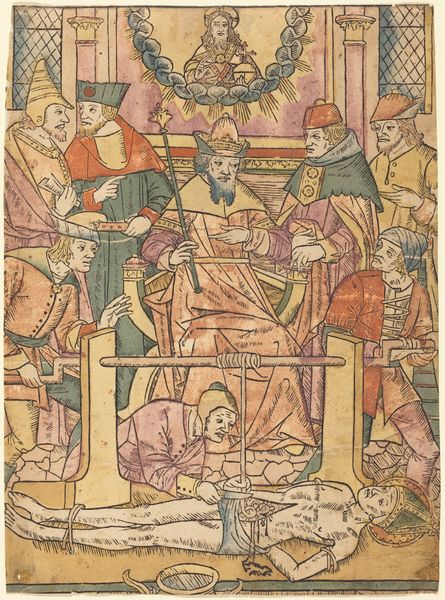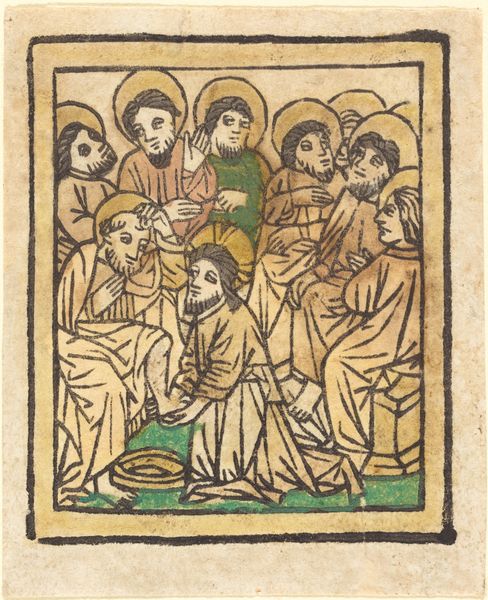
drawing, painting, watercolor
#
drawing
#
medieval
#
painting
#
stain glass
#
figuration
#
watercolor
#
watercolour illustration
#
history-painting
#
stained glass
#
watercolor
Dimensions: 182 mm (height) x 145 mm (width) (bladmaal)
Editor: This is a watercolor painting called "Christ in Bethany," by Joakim Skovgaard. It was painted sometime between 1856 and 1933. The style and medium give the whole artwork a stained-glass feel, and that medieval influence makes me think about the role of religious imagery during that era. What is your interpretation of this piece? Curator: Seeing this watercolor design by Skovgaard, and understanding that it resembles a stained-glass window, immediately calls to mind the role such imagery played in religious instruction. Can you think how the style here might have influenced public perception and reinforced cultural narratives of the time? Editor: I suppose that a stained-glass style would connect the image to the authority of the church and familiar Biblical stories. This probably would make the images more easily read by churchgoers. Curator: Precisely. Skovgaard isn’t just depicting a biblical scene; he’s consciously engaging with the history of religious art and its function within society. Consider the formal aspects: the flattened perspective, the strong outlines, and the compartmentalization of color – what purpose might those choices serve? Editor: I guess this could simplify the scene, like turning the religious event into an understandable teaching moment. But do you think this would be accessible only by those with the existing religious background? Curator: That's a valid point. Visual cues certainly aided interpretation for those familiar with the stories. But the impact may have also extended beyond that group. Did Skovgaard create similar stained glass illustrations that might help to understand the target audience better? Editor: I’ll have to look into Skovgaard's work in more depth! Curator: And I will be on the lookout for similar stained glass illustrations! This little exchange shows how thinking about history changes the way you view art.
Comments
No comments
Be the first to comment and join the conversation on the ultimate creative platform.
